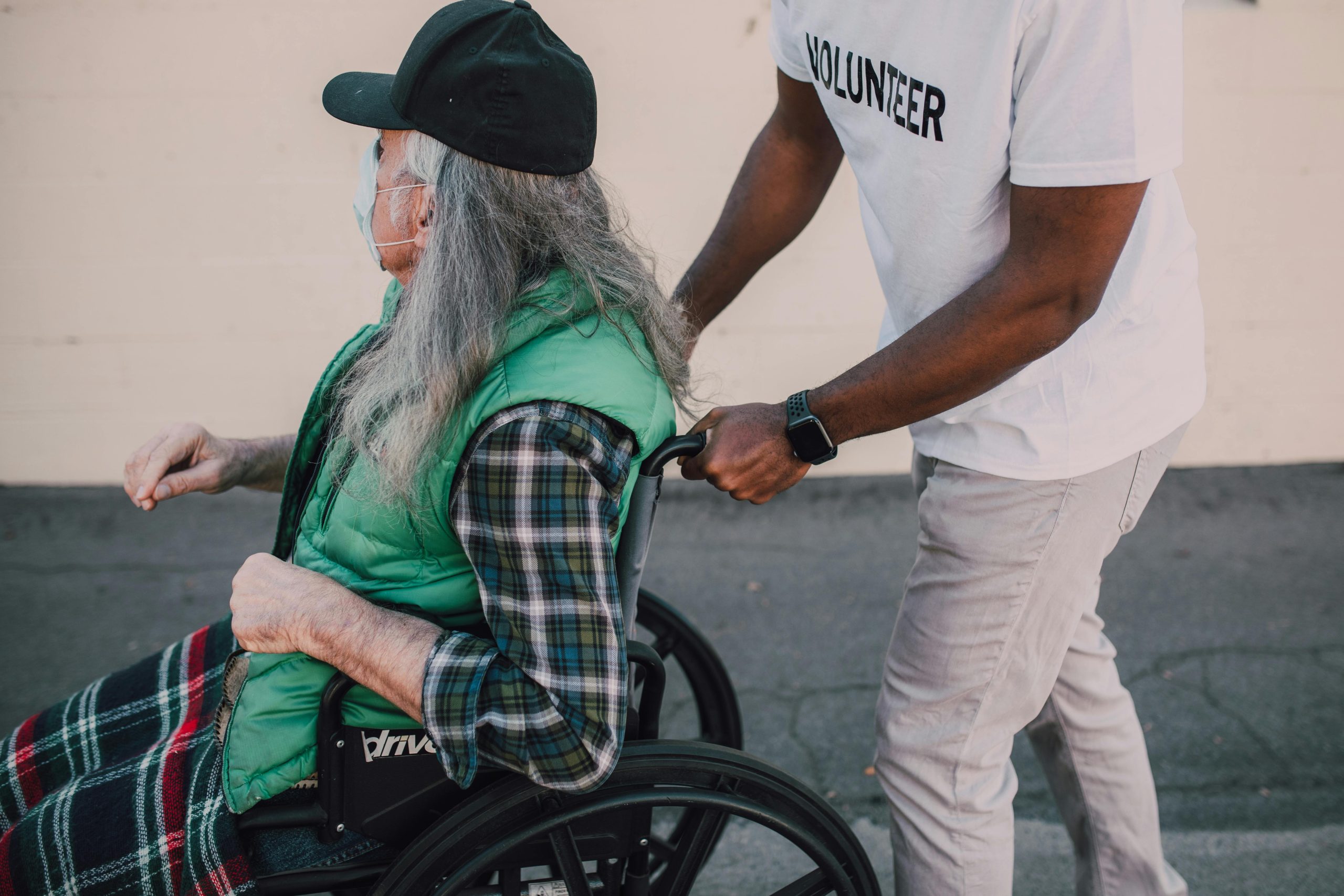Deepfake fraud has exploded in the past year, catching almost everyone off guard. What was once a rare trick is now a widespread nightmare, with scam cases linked to fake audio and video surging over twelve times in just over two years. There’s a new face to this story: retirees, who are now losing more money than any other group.
Most anti-fraud campaigns miss these older Americans, leaving them exposed. While scammers sharpen their methods, families and watchdogs scramble to keep up. This post shines a light on how deepfakes now target those often hidden from the frontlines, exposing a gap in protection too large to ignore.
Deepfake Fraud Surges: The Numbers Behind the Scare
The data paints a sharp, alarming rise in deepfake scams sweeping across the country. Not only are these fake videos and audios tricking people more often, but they’re getting better, cheaper, and faster. More Americans—especially older adults—are finding themselves outmatched and out of pocket, as scams powered by deepfakes take fraud to a new, unsettling level.
What Are Deepfakes and How Are They Used in Scams?

Photo by Mikhail Nilov
Deepfakes are artificial intelligence tools that create convincing fake videos, photos, or audio recordings. They can show someone saying or doing things that never happened. The technology is now so refined, even eyes and ears miss the difference.
Fraudsters have embraced deepfakes as their new favorite trick. They use these fake recordings to:
- Impersonate family members: Scammers fake a loved one’s voice in a crying phone call, asking for urgent money.
- Mimic bosses or colleagues: Criminals send messages or videos posing as managers, telling workers to transfer company funds.
- Stage fake emergencies: A call from a supposed authority figure—with perfect tone and urgency—convinces targets their bank account or computer is at risk.
Each method lets the scammer slip past normal suspicion. Few question a grandchild’s voice trembling with fear, or a bank manager calmly warning of fraud. With deepfakes, scams feel real.
Thirteen Times Higher: Understanding the Jump
The surge is stunning. In 2022, reports of deepfake-driven identity scams made up just 0.2% of all scams captured by the FTC. By the first quarter of 2025, that figure had exploded to 2.6%.
- 0.2% (2022): Deepfake fraud was rare, flying under the radar.
- 2.6% (Q1 2025): Now, in just three years, it’s a top threat.
Put plainly, for every 500 scam cases reported in early 2025, 13 involved deepfakes. Three years ago, that number was just 1. The difference turns a quiet trickle into a flood.
This change is more than a statistic. It means thousands more families, retirees, and businesses lose trust and money. For those hit hardest—many of them retirees—the threat feels new, invisible, and personal.
Scammers no longer just send emails full of typos or odd requests. Now, they send “your son” pleading for help, using his voice, at 10 o’clock at night. The numbers don’t just tell a story—they scream it.
Retirees in the Crosshairs: Why Older Adults Are at Risk
A silent story hides within the FTC’s numbers. Behind the surge in deepfake scams, retirees are taking the most damage. Less flashy than other targets, older adults face unique pitfalls that come from being sidelined in the rush to fight online fraud. Their lives, routines, and unspoken trust in voices and faces put them directly in scammers’ sights.
Overlooked and Underprotected: The Demographic Blind Spot

Photo by Tima Miroshnichenko
Most anti-fraud outreach flashes by on TikTok, Facebook, or in workplace emails. Billboards carry warnings in lingo that makes sense to the very young and very wired. What about retirees—often offline, not plugged into these channels? Their world moves at a gentler pace: morning coffee, a phone call from the grandkids, the daily news on TV. Warnings rarely reach them.
Key reasons why retirees are overlooked:
- “Awareness” ads target younger adults and working professionals.
- Scams shown in training videos rarely feature older adults as victims.
- Community support is limited or missing for seniors who feel ashamed or embarrassed by being tricked.
Scams targeting retirees often tap into trusting personalities built over a lifetime. Many older adults grew up in times when “a man’s word was his bond,” where a familiar voice or face meant safety. That trust, once a bedrock for community, now gets twisted into a trap.
It’s easy to picture Mary, 72, who never doubted a “call from her bank” because, for years, the bank manager greeted her by name. When a fake voice on the phone matched that kindly tone, her guard dropped. These are not high-drama movie stings—just quiet thefts in living rooms.
How Scammers Exploit Trust and Routine
Retirees often rely on simple routines and trust. That becomes the perfect backdrop for scams. Deepfakes offer something criminals always wanted: the ability to mimic not only someone’s words, but their warmth, worry, and urgency.
Common tactics used against retirees:
- Impersonating family: A shaky-voiced “grandson” calls, pleading for bail money after a supposed accident.
- Fake authority figures: Scammers recreate the friendly tone of a trusted banker or health provider, convincing the retiree to “verify” personal details or move funds.
- Utility and tech scams: Calls claim the power will be shut off for unpaid bills unless immediate payment is made—backed by a real-sounding voice and call-back number.
Let’s look at a real scenario: John, a retired teacher, answers a call from what sounds like his daughter. The voice shakes with fear. She needs money now or she “won’t make bail.” The details (her school, her favorite pet’s name) are spot on. John, not imagining tech could fake a voice, wires the cash. A few hours later, the real daughter calls, shocked and safe at home.
Why do these work so well? Scammers know retirees:
- Keep set routines, so out-of-the-blue calls seem urgent and alarming.
- Value their role as helpers in the family.
- May fear being a burden or “bother,” so may not double-check with others before acting.
These scams are not just tricks; they’re engineered heartbreak, exploiting every hole that trust and routine leave open. For thousands of retirees, the loss isn’t just money. It’s the shock that the world is worse—and more cunning—than they realized.
Why Current Anti-Fraud Campaigns Fall Short
Every year, organizations pour millions into anti-fraud campaigns. Posters warn of phishing emails. TV spots show young people outsmarting would-be swindlers. Social media feeds fill up with “fraud busting” tips. But if deepfake scams are hitting retirees the hardest, why do these defenses seem invisible to the ones who need them most? The answer lies in who the campaigns reach—and, more importantly, who they ignore.
The Gaps in Awareness and Education
Young faces fill every ad about online safety. Campaign slogans use hashtags or meme humor. Most anti-fraud outreach reads like it’s written for teenagers, college students, or busy workers scrolling on their lunch break. This isn’t just a style choice—it’s a strategy that misses the mark for retirees.
Take a moment to picture the usual anti-fraud warning:
- Flashy graphics and slang-heavy text.
- Alerts pushed on Instagram or specialist apps.
- Advice to “reach out to your IT support” or “check your company’s channel.”
How many sixty-somethings see these messages? How many see themselves in the story?

Photo by Tara Winstead
When anti-fraud campaigns skip retirees, the fallout is real:
- Statistical silence: The FTC’s jump from 0.2% to 2.6% deepfake scam reporting is only part of the story. Many older adults never recognize the crime or report it out of shame, so the true numbers are almost certainly higher.
- Personal stories lost: Consider the story of Alan, an 80-year-old widower who lost his life savings to “his grandson’s” urgent call. There was no warning on the TV, no community flyer, nothing that showed him scams could sound so heartbreakingly real.
The result? Retirees remain unready. Campaigns may call for “awareness,” but leave out those most in need of it.
Barriers to Reaching Older Victims
Retirees don’t just live in slower lanes. They drive on different roads altogether. Any campaign that fails to meet them where they are will always fall short.
Three barriers stand out:
Technology Comfort
Many retirees use the internet for email or news, not for snapping selfies or streaming live videos. They may not be comfortable with navigating new digital platforms. Campaigns that put vital warnings only on social sites miss this group altogether.Social Habits
Unlike younger generations, retirees rely on personal contact and trusted networks: phone calls, in-person talks, and community events. They trust voices they know and are less likely to question familiar tones, especially when urgent.Communication Channels
Successful anti-fraud campaigns for working adults lean on workplace updates or app notifications. Retirees instead tune in to:- Local newspapers
- Mailed newsletters
- Morning TV shows
- Church bulletins and community boards
If warnings don’t show up here, they may as well be invisible.
What does this mean in practice?
A retiree could watch hours of TV each week and never see a single warning about deepfakes. Their mailbox fills up with charity appeals, not fraud alerts. The voices they hear on the phone or see on video chats are, to them, still sacred ground.
Popular anti-fraud efforts stand on the wrong corner, turning a blind spot into a gaping hole. Until campaigns fit the habits, language, and needs of older adults, scammers will keep sneaking through doors left wide open.
Protecting Our Elders: Strategies for a Safer Future
The rush of deepfake scams leaves older adults facing risks few expected. It’s not just about the tricks, but about the cracks in our support systems. Families, communities, and organizations must rethink how they protect those who raised us. Safeguarding retirees demands more than a warning; it calls for campaigns and care that truly fit their lives.
Championing Tailored Education and Outreach
Designing fraud awareness for older adults is not a one-size-fits-all task. Older Americans are used to direct, plain talk and personal notice—not hashtags or flashy graphics. Meeting them where they are, in both language and habits, can shift everything.

Photo by RDNE Stock project
Here’s how families, organizations, and communities can create outreach that hits home:
- Use trusted channels: Place warnings in local newspapers, community newsletters, and church bulletins. Don’t forget in-person sessions at senior centers or retirement homes.
- Keep it simple: Avoid tech jargon. Use large print, clear examples, and real stories. Slideshows, short videos, or even roleplay can help the message stick.
- Repeat the message: Retirees may miss an alert the first time. Reinforce with regular reminders—think monthly, not just annual campaigns.
- Include relatable scams: Show how a scam might really sound or look in their world. If every example uses a “company CEO,” the warning misses the mark. Use “the bank manager,” “the grandchild,” or “the doctor’s office.”
- Turn victims into voices: Let retirees who have spotted or even survived scams safely share their experience. Real voices cut through fear and build trust.
- Offer a ‘call before you act’ rule: Teach that it’s always okay to hang up and call a loved one or the business back on a known number, no matter how urgent a call or message seems.
Campaigns that speak in the tone, pace, and values of retirees will always do more than a flashy post online. When the lesson feels close to home, defenses start to rise.
Empowering Retirees and Their Circles
Scammers count on silence and isolation. A retiree alone is far easier to trick. The answer lies in community—active support from friends, family, care teams, and trusted groups. The more eyes on the problem, the fewer secrets for scammers to exploit.
Practical steps for building these protective circles:
- Family Check-Ins:
Set a routine for regular check-ins by phone or in person. Use these chats to talk about new types of scams, or just remind each other to be careful with unexpected requests. - Safe Harbor Networks:
Form small groups at senior centers or clubs, where members agree to run any urgent or odd call by someone else before sending money. A second opinion can be a lifesaver. - Healthcare and Community Partnerships:
Ask doctors, nurses, and visiting aides to share short, friendly reminders about scam safety during appointments. Tie fraud awareness into regular wellness visits. - Teach Digital ‘Gut Checks’:
Give retirees simple signs to look for—like a sense of panic, urgency, or an odd payment request. Remind them: if it feels rushed, pause and ask for help. - Empower Care Teams:
Train staff at local banks, pharmacies, and post offices to notice odd withdrawals or wire requests. A friendly question, “What’s this for?” can slow down a scam in progress. - Build ‘Buddy’ Systems:
Pair seniors with a peer or volunteer who helps review suspicious messages or calls. Sometimes a quick second look is all it takes.
When circles of trust close in around retirees, scams lose their power. This support lets older adults keep their pride and independence, while knowing help is always close.
Protecting elders is not about locking the doors tighter, but about handing them the keys and showing them safe paths. The stronger our circles and the clearer our voices, the less ground scammers gain.
Conclusion
Deepfake scams have found a wide-open door in our communities, with retirees too often left behind by the usual warnings. Change starts when we recognize this blind spot and refuse to let it stay hidden. By meeting older adults where they are—at church suppers, in mailboxes, and over shared cups of coffee—we can bring the message home and shut out the crooks.
Act now. Share a story, show a neighbor the signs, ask care providers and local leaders to join in. This wave of scams will slow only when we close ranks, protect every generation, and help retirees see the danger before it lands at their doorstep. Stay connected, stay informed, and help shine a light for those who taught us to trust in the first place.